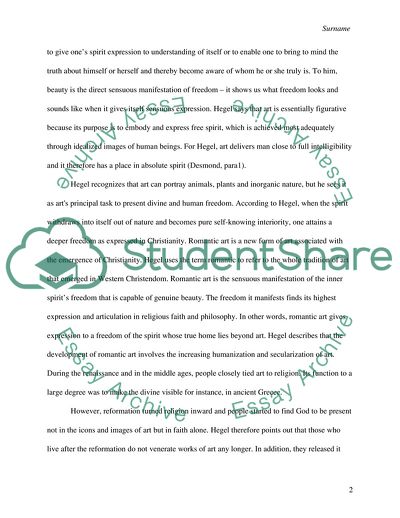Cite this document
(Friedrich Hegel's Philosophy Term Paper Example | Topics and Well Written Essays - 1750 words, n.d.)
Friedrich Hegel's Philosophy Term Paper Example | Topics and Well Written Essays - 1750 words. https://studentshare.org/philosophy/1722764-explain-and-assess-hegels-view-that-art-is-on-the-side-of-its-highest-destiny-a-thing-of-the-past
Friedrich Hegel's Philosophy Term Paper Example | Topics and Well Written Essays - 1750 words. https://studentshare.org/philosophy/1722764-explain-and-assess-hegels-view-that-art-is-on-the-side-of-its-highest-destiny-a-thing-of-the-past
(Friedrich Hegel'S Philosophy Term Paper Example | Topics and Well Written Essays - 1750 Words)
Friedrich Hegel'S Philosophy Term Paper Example | Topics and Well Written Essays - 1750 Words. https://studentshare.org/philosophy/1722764-explain-and-assess-hegels-view-that-art-is-on-the-side-of-its-highest-destiny-a-thing-of-the-past.
Friedrich Hegel'S Philosophy Term Paper Example | Topics and Well Written Essays - 1750 Words. https://studentshare.org/philosophy/1722764-explain-and-assess-hegels-view-that-art-is-on-the-side-of-its-highest-destiny-a-thing-of-the-past.
“Friedrich Hegel'S Philosophy Term Paper Example | Topics and Well Written Essays - 1750 Words”. https://studentshare.org/philosophy/1722764-explain-and-assess-hegels-view-that-art-is-on-the-side-of-its-highest-destiny-a-thing-of-the-past.


